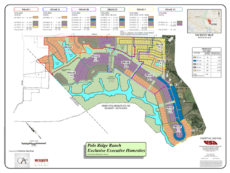
Fiscal and Economic Impact Analyses
Fiscal Impact Analyses
Since its establishment in 1985, DTA has prepared over 700 Fiscal Impact Reports (“FIRs”)
estimating the recurring revenue and cost impacts of different land use decisions on cities, counties, and special districts. FIRs have been prepared by DTA in conjunction with Specific Plans, Environmental Impact Reports, incorporations and annexations, reuse studies, General Plan amendments, Development Agreements, and general project proposals covering different types of residential, commercial/industrial, and mixed-use projects.
In addition to analyzing individual projects,
our firm’s FIRs may also include the fiscal analyses of land use/infrastructure alternatives, sensitivity analyses of alternative fiscal and land use assumptions, and fiscal analyses of annexation areas and subareas. DTA relies primarily on the Case Study Method of estimating impacts, which includes in-depth interviews with project proponents and public agency staff combined with thorough analyses of public agency budgets. Additionally, DTA maintains a detailed Public Works Database that includes comparable local and regional parameters, including operations and maintenance costs, replacements and depletion costs, labor costs, staffing levels, etc., that can be applied to an individual project or model.
DTA can also propose financing solutions,
including special districts, endowment payments, and private sector funding options, to mitigate fiscal shortfalls.
Economic Impact Analyses
DTA has prepared over 200 Economic Impact Analyses (“EIAs”) to project the one-time and annual recurring economic impacts of a development project on a local economy. General economic impacts include additions to regional economic output (gross receipts or sales), earnings (the sum of wages and salaries, proprietors’ income, and other labor income), and employment (number of average annual full-time and part-time jobs created and the impact on an area’s jobs/housing balance). DTA determines the indirect and induced economic impacts of a project by utilizing multipliers from reputable sources and applying them to on-site project employment estimates. DTA’s EIAs have been utilized by the States of California, New Mexico and Nevada, local municipalities, redevelopment successor agencies, community development enterprises, landowners, and other parties to determine whether such impacts merit the granting of project entitlements or project subsidies to enable a project to move forward. They have also been used in successful applications for New Markets Tax Credits (“NMTCs”).


